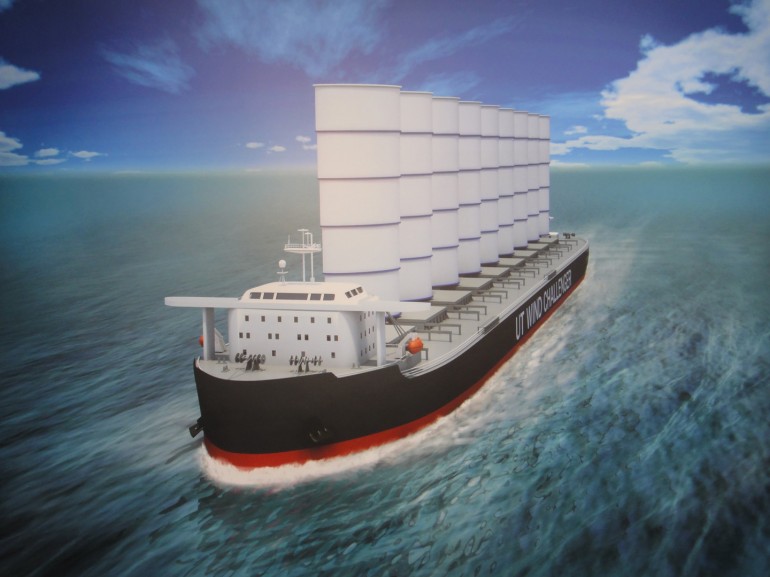Sails to power future cargo ships, global trade


Wind power once ferried flotillas of commerce across the seas. Now, as fossil fuels dwindle and become more costly, prototype cargo vessels are starting to incorporate high tech sails.
The New York Times' John Geoghegan yesterday wrote an article about how the sail, an innovation from antiquity, might make a comeback among a common class of cargo carriers: vessels that transport between 3,000 to 10,000 tons.
These ships are smaller and slower than container ships, but nonetheless hold massive tonnage. Some 10,000 vessels of this class are in service worldwide, and account for one fifth of cargo ships, Geoghegan reported.
Both fuel costs and environmental regulations are on the rise. Cargo vessels are a major emitter of the greenhouse gas carbon dioxide, and the United Nations is responding to the threat with new rules.
The shipping industry would be the sixth largest CO2 polluter if it were a country, says Oceana, an international conservation organization. A new class of ships is catching wind to solve those issues.
Geoghegan's report detailed two vessels: one called the Wind Challenger that's being modeled by the University of Tokyo, and another that's being designed by Northern Ireland's B9 Shipping. Both ships would have sails towering well over 100 feet.
Wind Challenger's masts rise to 164 feet in height, and hold high tech rigid aluminum and plastic sails. The sails will automatically retract when the ship encounters rough weather or is docked. B9's design has sails that are as tall as a small apartment tower (not the walk up type).
The B9 vessel also takes advantage of a Rolls-Royce biogas engine. A model of the ship was tested last month, and proved out the design's economic advantages, the report noted. The ship would cost US$45 million, and take three years to build.
Other approaches to reducing the energy costs of shipping include solar sails and bionic container ships. A vessel called the Turanor PlanetSolar has already cruised the China Sea on 100% solar power. German researchers are pioneering nature inspired bionic vessels that use low friction surfaces on their hulls to save fuel.
Sails were first invented at least 5,000 years ago, and the fern, the simple plant that made possible the bionic ship, is over several hundred million years ago. Who ever would have thought that the ancient world would be determining our future?
(Image credit: University of Tokyo)
Related on SmartPlanet:
- Amazing ship can carry 100,000 ton oil rigs
- Solar sails for cargo ships
- Fighting pirates with laser cannons
- Global shipping industry transporting microscopic invaders
- Bionic cargo ships riding waves to better fuel efficiency
This post was originally published on Smartplanet.com